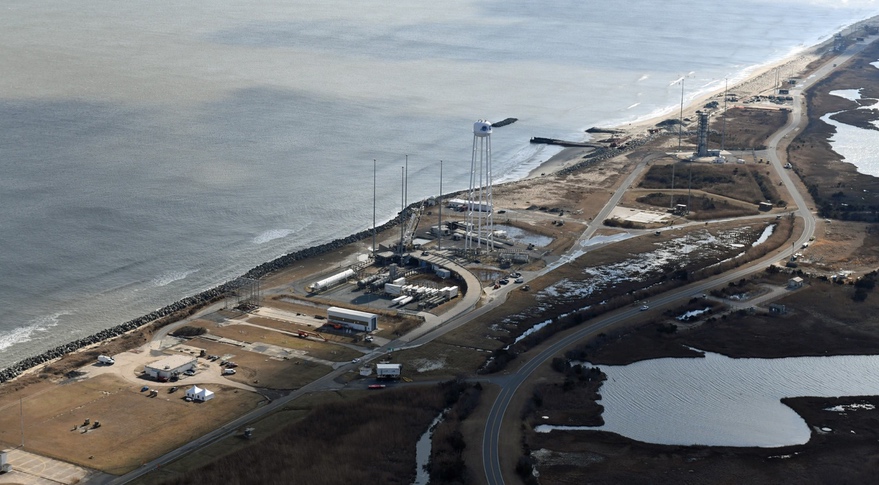Updated 7:10 p.m. Eastern with launch slip.
WASHINGTON — The first Electron launch from Wallops will mark what spaceport officials hope is the start of a new era of increased launch activity there.
Rocket Lab said Dec. 15 that its first Electron launch from Launch Complex 2 on Wallops Island, Virginia, has slipped two days to Dec. 18 between 6 and 8 p.m. Eastern. The company said that NASA and the Federal Aviation Administration were still working to complete range documentation needed for the launch. A backup launch opportunity is available Dec. 19.
The introduction of the Electron, delayed by two years because of problems developing and certifying a NASA autonomous flight termination system, comes as more new launch vehicles enter the market and look for sites to launch from.
“We have a great deal of interest, both from international rocket providers as well as domestic, for seeing if they can secure an opportunity to launch from MARS,” said Ted Mercer, chief executive and executive director of Virginia Space, which operates the Mid Atlantic Regional Spaceport (MARS) where Launch Complex 2 is based. He spoke during a Dec. 14 briefing about the upcoming Electron launch.
He said “several” launch companies are talking with him about launching from MARS, but did not identify any. “Interest is high,” he said, including working on an agreement with a non-U.S. launch provider. “We are willing and able to talk to new providers about launching from MARS.”
At a media event in June, Mercer said he was working with companies to understand their requirements. Some companies, he said then, were looking to use methane rather than kerosene for fuel. “We’re already planning for those,” he said, along with upgrades to launch control facilities to replace old blockhouses.
In addition to the MARS facilities, there are two “flat pads” at Wallops with only the most basic infrastructure, such as a concrete pad and lightning towers, that could be used for small launch vehicles. Bob Jameson, deputy director of NASA’s Wallops Flight Facility, said in June those were built by DARPA for potential use in its DARPA Launch Challenge, and are still owned by that agency but operated by NASA.
“That represents the future of a multi-user spaceport,” he said of those flat pads. “Emerging small launch vehicles would bring in all their stuff and operate there.”
The main user of MARS today is Northrop Grumman, which launches its Antares rocket for Cygnus cargo missions to the International Space Station from Launch Pad 0A at MARS and Minotaur rockets from Launch Pad 0B. (Virginia Space designates Rocket Lab’s Launch Complex 2 as Launch Pad 0C.)
However, Minotaur launches are infrequent and Antares will go on hiatus after one more launch early next year as Northrop works with Firefly Aerospace on a new version of the rocket to replace its existing Ukrainian first stage and Russian engines. That new version, the Antares 330, will launch from Launch Pad 0A at MARS as well, but no earlier than late 2024. In the interim, Northrop will launch Cygnus missions on SpaceX Falcon 9 rockets from Florida.
In that hiatus, Rocket Lab may become the anchor tenant at MARS. Company executives said in a Nov. 9 earnings call that they expect to conduct four to six Electron launches from Wallops, out of 14 Electron launches overall, in 2023. The company is also building a factory just outside the Wallops gates where it will produce its Neutron reusable vehicle, which will launch from a new pad at Wallops as soon as 2024.
That activity means jobs for the region. “We see a very large number of jobs” coming from Electron and Neutron activities at Wallops, said Peter Beck, chief executive of Rocket Lab, at the Dec. 14 briefing. “It’s on the order of hundreds. We’re looking to establish a pretty significant footprint here.”
David Pierce, director of NASA’s Wallops Flight Facility, said he has been working with officials in the Eastern Shore region on issues ranging from launch-related tourism to education and workforce to support a higher launch rate. Wallops-related activities today have an economic impact on the region of $1.4 billion a year, he said, “and we see nothing but that increasing with Peter’s investment and confidence in Wallops.”
Mercer said he expected the projected increase in launch activity to attract more suppliers in the area to support Rocket Lab and other launch companies. “That is another dimension that you will see in terms of growth and economic impact on the Eastern Shore.”
